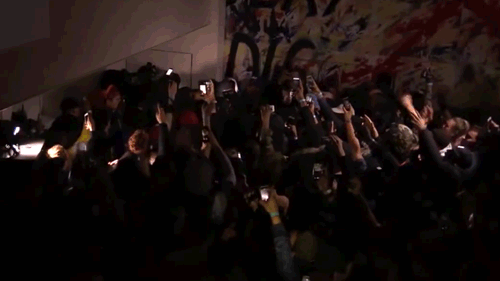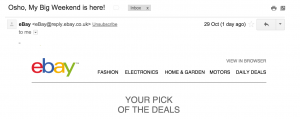In 2010 Boiler Room fostered and embraced a new way of experiencing music and events online, live video streaming. Not only did they create a unique video platform for musicians, they gave birth to a global online audience that they describe as “the world’s leading community of underground music fans”. They have recorded sessions in numerous nightclubs, warehouses and hotel rooms across the globe and they have generated tens of millions of views online.
“Boiler Room, a site that takes DJs from the bleeding edge of the UK underground and puts them on at an invite-only secret location” (Wolfson, 2011)
Recently, Boiler Room has increasingly become commercially focused, presenting partnerships with brands such as car makers Audi and Fiat as well as companies like Ray Ban and GoPro by curating live streamed shows with heavily branded content throughout. These partnerships with Boiler Room offer a unique opportunity to brands – a foot in the door with a young, global and technically savvy audience who, would more often than not, utilise ad-blocking applications on video sites such as YouTube, UStream and DailyMotion. 65% of global internet users who utilise ad-blockers are aged 16-34 (Statista, 2016), Boiler Room’s demographic perfectly matches this age group.
Another unique Boiler Room factor is their ability and persistence in providing a platform for female musicians, such as artists like Nina Kravis, Maya Jane Coles and Ellen Allien. By being inclusive of all genders, Boiler Room are breaking down normal advertising constraints, because ultimately it can be argued that underground music is universal, regardless of gender.

Boiler Room has, most likely unintentionally, gained some negative attention from bloggers, a blog called ‘Boiler Room knows what you did last night‘ produces comedic GIFs of people’s outrageous dance moves caught on camera during a live session, above is a GIF captioned ‘Phoney’. Boiler Room has become synonymous with “underground grooves, hot dance tunes, strangely dressed hipsters with the worst dance moves” (Magnetic Magazine, 2014). Although this is seemingly troll-like, in my opinion, blogs like this will only bolsters people’s engagement with Boiler Room.
As long as brand partnerships don’t obtrusively cross the boundary between branded events and advertising, I deem this kind of online marketing to be usefully engaging with a young audience. Having said that, Boiler Room have now been doing this for over half a decade, where is online branded content going next? And who should digital marketers be keeping a close eye on?
Well, in 2006 record label Universal Music launched a multi-media production company called Globe Productions solely aimed at generating broadcast quality digital videos and tv programmes alongside offering unique brand partnerships and product placement opportunities for brands. Globe Productions are currently at the forefront of online branded content, with partnerships with various multinational brands, enabling them to not only generate revenue, they are able to promote the musicians that are signed to their label.
This innovative style of online consumer engagement is only going to become more sophisticated, especially with the introduction of high-tech augmented and virtual reality headsets to the global market. Augmented reality allows the consumer to engage with a brand in an entirely new way, consumers will be able virtually try on products (Yaoyuneyong et al, 2015). Marketers are being urged to dive in and utilise this technology and create business applications, as quoted by The Guardian (2015), GE‘s Linda Boff said to marketers “you have to start experimenting”. The future of advertising lies in augmented and online virtual reality, a new marketing platform currently not being exploited to its full potential.
I’ll leave you with a video round up of the best moments from Boiler Room’s live streams…
References;
Magneticmag.com. (2014). [online] Available at: http://www.magneticmag.com/2014/06/magnetics-5-reasons-boiler-room-best/ [Accessed 25 Apr. 2016].
Statista. (2016). Global ad blocking by age 2015 | Statistic. [online] Statista. Available at: http://www.statista.com/statistics/456031/global-ad-blocking-internet-users-age/ [Accessed 25 Apr. 2016].
The Guardian. (2015). What does virtual reality mean for advertising in 2016?. [online] Available at: http://www.theguardian.com/media-network/2015/dec/03/virtual-reality-in-advertising-2016 [Accessed 25 Apr. 2016].
Wolfson, S. (2011). Fear of missing out? Ustream and Boiler Room bring clubbing to your sofa. [online] the Guardian. Available at: http://www.theguardian.com/music/2011/mar/19/boiler-room-ustream-james-blake [Accessed 25 Apr. 2016].
Yaoyuneyong, G., Foster, J., Johnson, E. and Johnson, D., 2015. Augmented Reality Marketing: Consumer preferences and attitudes towards hypermedia print ads. Journal of Interactive Advertising, (just-accepted), pp.00-00.


